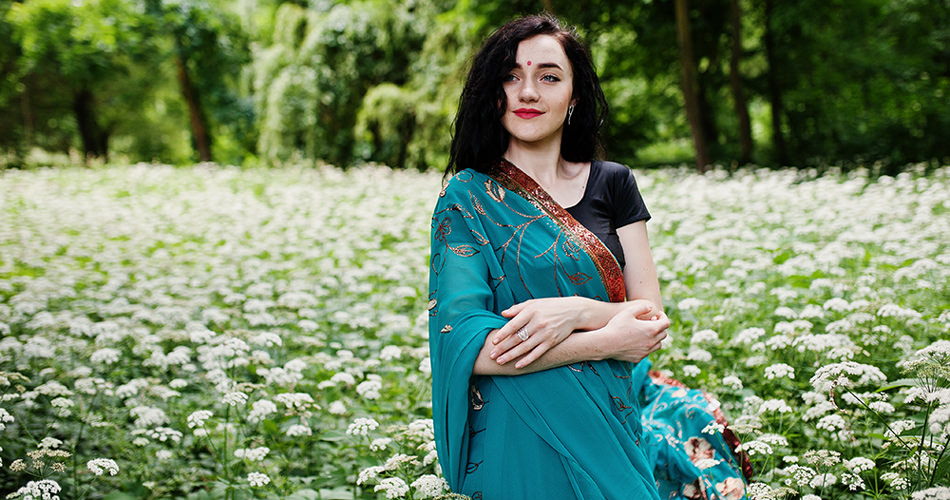A six yards long of fabric that speaks a lot of volume, rich culture, heritage and flawless beauty in a woman. A Saree is simply a kind of popular garment wrapped around the body with one end draped over a shoulder. It is worn by many women in South Asian countries, especially India, Pakistan, Nepal & Sri Lanka. Deriving from Indus Valley Civilization, saree for Indian ladies is the native costume, starting to wear from the age of 15 where a girl generally begin to show signs of physical and emotional beauty. Some Indians even wear it to sleep. However, in other countries, it is more of an occasion-based costume. However, a saree tends to give a woman a sense of self-esteem depending on the manner they drape it.
Occasions where a Saree is worn
In Sri Lankan context it is mostly worn by school teachers on a daily basis. Back in the days it was a traditional outfit for the Kandyan Kingdom later originalised as the national dress for Sinhalese women worn specifically for weddings and religious places. Kandyan saree style is one of the most elegant looking outfits for a Sri Lankan lady. A Kandyan bride wearing 26 pieces of hand made jewellery from head to waist is a charming princess on a Sri Lankan traditional Poruwa.
However, currently in Sri Lanka Saree has become a more versatile piece of garment. It is the official outfit for government sector female employees in the country. It is also one of the most widely worn outfits of all young and old ladies at Sri Lankan Sinhalese & Tamil wedding. Prominently the School teachers wear it to gauge respect from the children in the school as a saree adds a touch of respect for a woman.
How a Saree Boosts Self-Esteem
As I previously mentioned it all depends on the way you wear it. The best place to witness this is at a typical Sri Lankan wedding. There are different styles to drape a saree. One of the main purposes of wearing a saree is to display a lady’s figure and the beauty, as it could be tightly draped right fitting to the figure of a woman. However the moment one wears it to display more than what is needed, that is when a woman loses her self-esteem over her outfit. In an honest sense, if you feel your saree is not covering your body fairly, you tend to lose control over your conduct and thoughts of self-judgment begin within.
Moreover, draping of a saree needs talent and appropriate articulation, as it needs to fit tight into your body, pinned properly because when you are in a saree the ability of your movements is slightly restricted. Therefore if at you feel a loosening of the pin you may require assistance from a fellow female colleague. Hence a saree needs to be worn properly to ensure it will not fall apart amidst your first dance or your lecture destroying your entire self-esteem built throughout.
Simultaneously, choosing the latest trends in saree and draping styles, helps a woman to gain a welcomed confidence as women are more likely to be judged mostly by other women over their outfits. Thus when you choose a saree that suits your preference, style and conduct it helps you to Be You!
A saree worn by a school teacher in Sri Lanka acts as an icon to gain and solidify respect. So, do children truly respect a teacher because she is in saree? I am doubtful, however, it helps them earn that respect from the kids.
Though saree is just a few yards of clothing, there are beautiful designs one could choose wisely as per their preference, and several tips on wearing it appropriately to ensure you do not look gaudy in it. Calm, light-toned sarees with a minimal touch of design need to be coloured with one significant piece of heavy jewellery. Whilst on the other end, a heavily embroidered saree needs to be kept as simple as possible to ensure the saree work blends with the wearer.
So, ladies next time your saree, dress to impress!

